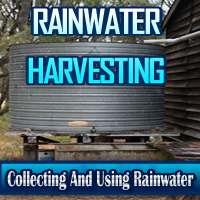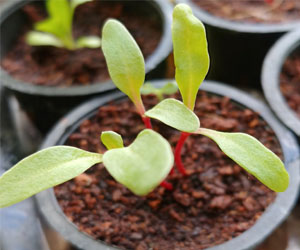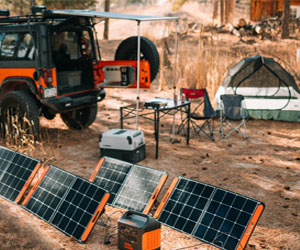


A Sustainable Approach To Water Management

Water harvesting systems are a set of practices and technologies designed to capture, store, and manage rainwater for various purposes. In a world facing growing concerns of water scarcity and resource management, these systems have gained increasing prominence as a sustainable solution to address these challenges. This article explores the significance of water harvesting systems, their various types, and their potential benefits.
The Importance Of Water Harvesting Systems
Water harvesting, also known as rainwater harvesting, represents a forward-thinking approach to water management for several reasons:
Conservation: Water harvesting helps conserve precious freshwater resources by utilizing rainwater for non-potable purposes, reducing the demand on conventional water sources.
Environmental Stewardship: These systems promote responsible water use, reduce runoff, and contribute to the health of local ecosystems by preventing soil erosion and aiding in groundwater recharge.
Water Resilience: In the face of climate change and increased instances of drought, water harvesting can provide a dependable source of water for a variety of applications.
Cost Savings: By reducing reliance on treated water from utilities, water harvesting systems can lead to lower water bills and savings for both homeowners and businesses.
Types Of Water Harvesting Systems
Rooftop Rainwater Harvesting: This is one of the most common and straightforward systems. Rainwater collected on rooftops is channeled through gutters and downspouts into storage tanks or cisterns. It is often used for landscape irrigation, flushing toilets, and other non-potable applications.
Surface Runoff Harvesting: In regions with significant rainfall and topographical variations, surface runoff can be collected in ponds, swales, or other storage facilities. This water can then be used for agriculture, groundwater recharge, or aquifer storage and recovery.
Fog And Dew Collection: In arid or semi-arid areas, specialized systems can collect moisture from fog and dew, which condense on collection surfaces and can be used for drinking or irrigation.
Floodwater Harvesting: In flood-prone regions, floodwater can be stored in reservoirs, recharge structures, or channels, providing a sustainable source of water during dry seasons.
Benefits Of Water Harvesting Systems
Water harvesting systems offer a range of benefits:
Reduced Water Bills: By using harvested rainwater for irrigation, toilet flushing, or other non-potable purposes, homeowners and businesses can significantly reduce their water bills.
Water Resource Management: These systems help balance water supply and demand, particularly in regions facing water scarcity, by providing an additional water source.
Environmental Benefits: By reducing stormwater runoff, these systems mitigate the risk of flooding and erosion, protecting the quality of local water bodies and aquatic ecosystems.
Water Quality: Rainwater is naturally soft and low in minerals, making it suitable for various applications without the need for extensive treatment.
Energy Savings: Water harvesting reduces the energy required for water treatment and distribution, contributing to lower carbon emissions.
Water harvesting systems play a pivotal role in sustainable water management. As our planet confronts challenges like water scarcity and climate change, adopting these practices not only conserves water but also supports environmental health and promotes responsible water use. Embracing water harvesting is a step toward a more resilient, efficient, and sustainable water future.






Exploring Alternative Energy Sources
 Hydropower: Hydropower, generated from the energy of flowing water, has been a tried and true source of renewable energy for many years. Large dams and smaller hydroelectric plants generate electricity by harnessing the kinetic energy of water. While these projects can have significant environmental impacts, innovations in small-scale, low-impact hydropower systems are being explored.
Hydropower: Hydropower, generated from the energy of flowing water, has been a tried and true source of renewable energy for many years. Large dams and smaller hydroelectric plants generate electricity by harnessing the kinetic energy of water. While these projects can have significant environmental impacts, innovations in small-scale, low-impact hydropower systems are being explored.
Geothermal Energy: Geothermal power taps into the Earth's internal heat. It involves drilling wells to access hot water or steam reservoirs below the Earth's surface and using this thermal energy to generate electricity.
Building A Brighter Future Together
 Environmental Sustainability: At the heart of sustainable communities is a commitment to reducing their environmental footprint. This involves adopting eco-friendly construction and infrastructure, implementing energy-efficient technologies, reducing waste, and practicing sustainable land use.
Environmental Sustainability: At the heart of sustainable communities is a commitment to reducing their environmental footprint. This involves adopting eco-friendly construction and infrastructure, implementing energy-efficient technologies, reducing waste, and practicing sustainable land use.
Community Engagement: Sustainable communities prioritize community engagement and participation in decision-making processes. Residents actively contribute to the development and management of their community, fostering a sense of ownership and responsibility.
Social Equity: Social equity is a key component of sustainability. Sustainable communities aim to be inclusive and equitable, promoting equal access to resources, opportunities, and services for all residents, regardless of background or socioeconomic status.
Economic Resilience: Building economic resilience is crucial. Sustainable communities often emphasize local economies, supporting small businesses and initiatives that create jobs and enhance economic stability.
Eco-Friendly Transportation: Sustainable communities prioritize alternative transportation options such as cycling, walking, and public transit to reduce dependence on fossil fuels and lower carbon emissions.
Energy Efficiency: Implementing energy-efficient technologies and renewable energy sources, such as solar panels and wind turbines, helps reduce energy consumption and dependence on non-renewable resources.
Benefits Of Sustainable Communities:
Reduced Environmental Impact: Sustainable communities actively reduce their environmental impact by promoting eco-conscious practices, reducing energy consumption, and minimizing waste.
Improved Quality Of Life: Residents of sustainable communities often report an improved quality of life, with access to green spaces, clean air, and a strong sense of community.
A Smarter Way To Control Your Comfort
 How Intelligent Thermostats Work
How Intelligent Thermostats Work
Intelligent thermostats are a significant departure from traditional thermostats. They leverage advanced technology, including sensors, Wi-Fi connectivity, and machine learning algorithms, to provide precise and customizable control over your home's heating and cooling systems. These thermostats gather data about your preferences, daily routines, and the current conditions inside and outside your home. With this information, they can automatically adjust the temperature to create a comfortable and energy-efficient environment.
Benefits Of Intelligent Thermostats
Energy Efficiency: One of the primary benefits of intelligent thermostats is their ability to save energy and reduce utility costs. By learning your temperature preferences and adapting to your schedule, these devices can optimize heating and cooling, preventing unnecessary energy consumption.
Customized Comfort: Intelligent thermostats allow you to set personalized schedules and temperature preferences for different times of the day and week. You can ensure that your home is warm in the morning and cooler at night, all without manual adjustments.
Remote Control: Most intelligent thermostats are Wi-Fi enabled, giving you the power to control your home's temperature remotely through smartphone apps or web interfaces. This feature is especially useful when you're away from home and want to ensure it's comfortable upon your return.
Learning Capabilities: Over time, intelligent thermostats adapt to your lifestyle. They learn when you're typically at home and when you're not, making automatic adjustments to save energy without sacrificing your comfort.
Compatibility: These thermostats are often compatible with various heating and cooling systems, including traditional furnaces and air conditioners, heat pumps, and radiant floor systems.






The Liberating Power Of Minimalism
 Here are some key aspects of this philosophy:
Here are some key aspects of this philosophy:
Minimalist Living: At its core, "freedom from excess" aligns with minimalist living. It encourages individuals to declutter their living spaces, reduce their material possessions, and focus on the essentials that truly add value to their lives. Minimalist living emphasizes quality over quantity and promotes the idea that less can be more.
Financial Freedom: A focus on "freedom from excess" includes mindful spending and the avoidance of unnecessary debt. By living within one's means and reducing unnecessary expenses, individuals can experience financial freedom, reduce stress, and achieve greater control over their financial future.
Environmental Responsibility: Excessive consumption has a substantial impact on the environment. Minimalist living reduces waste, conserves resources, and lessens the carbon footprint. It encourages eco-friendly practices such as reusing, recycling, and reducing energy and water consumption.
A Call To Action For A Sustainable Future
 1. Climate Change: One of the most imminent environmental concerns is climate change, driven primarily by the increase in greenhouse gas emissions, such as carbon dioxide. This results in rising global temperatures, extreme weather events, and disruptions to ecosystems and human societies. Climate change is a global crisis that calls for rapid reductions in emissions and widespread adoption of clean energy sources like solar and wind power.
1. Climate Change: One of the most imminent environmental concerns is climate change, driven primarily by the increase in greenhouse gas emissions, such as carbon dioxide. This results in rising global temperatures, extreme weather events, and disruptions to ecosystems and human societies. Climate change is a global crisis that calls for rapid reductions in emissions and widespread adoption of clean energy sources like solar and wind power.
2. Deforestation: The rampant destruction of forests for agriculture, logging, and urban development poses a grave threat to the environment. Forests play a crucial role in carbon sequestration, biodiversity preservation, and climate regulation. Protecting and restoring these ecosystems is essential for our planet's health.
3. Pollution: Environmental pollution, including air, water, and soil pollution, is a significant concern. It adversely impacts human health, disrupts ecosystems, and damages wildlife. Initiatives to reduce pollution, stricter regulations, and sustainable practices are essential to mitigate these effects.
4. Biodiversity Loss: The loss of biodiversity due to habitat destruction, pollution, and invasive species is a significant concern. Biodiversity is essential for ecosystem stability, resilience, and human well-being. Conservation efforts and sustainable land management are crucial for addressing this issue.
5. Resource Depletion: The excessive consumption of natural resources, such as freshwater, minerals, and fossil fuels, is depleting the Earth's finite reserves. Transitioning to a more circular economy, where resources are recycled and reused, is a solution to this pressing problem.